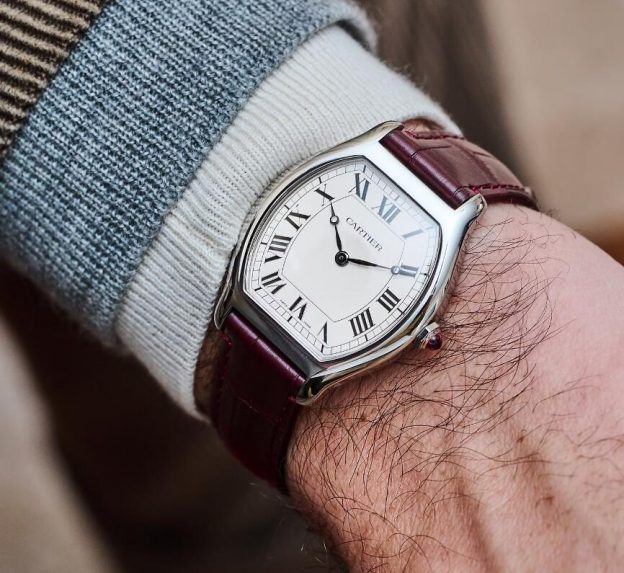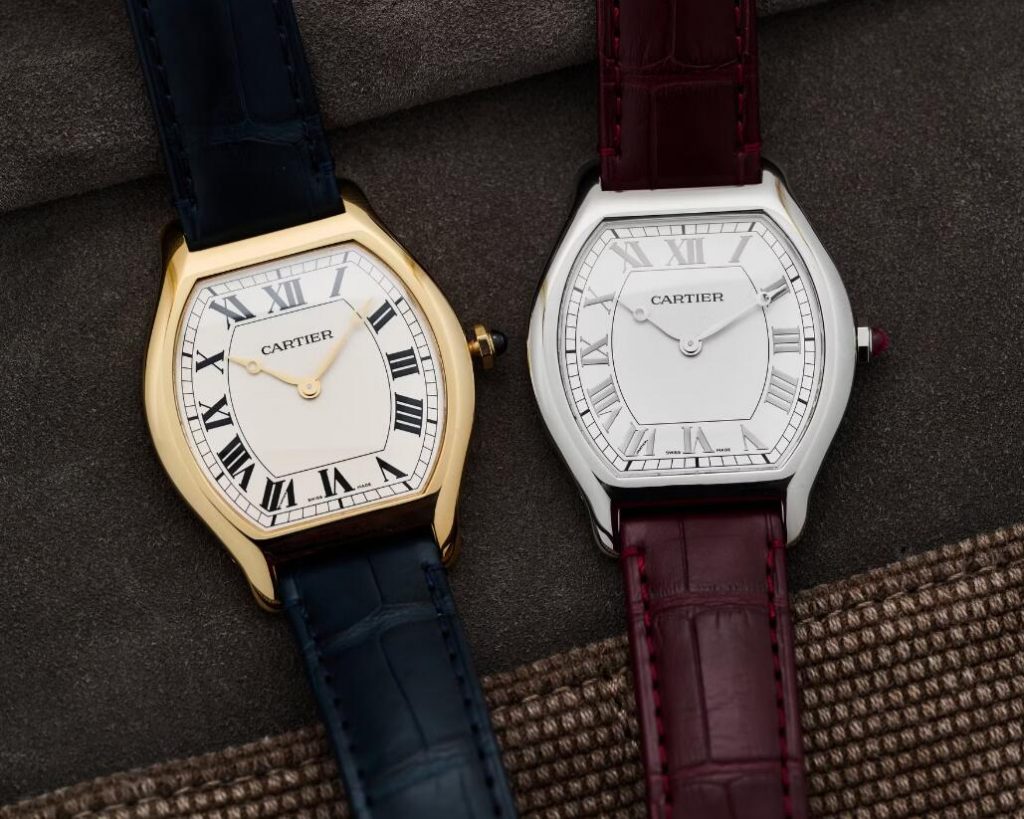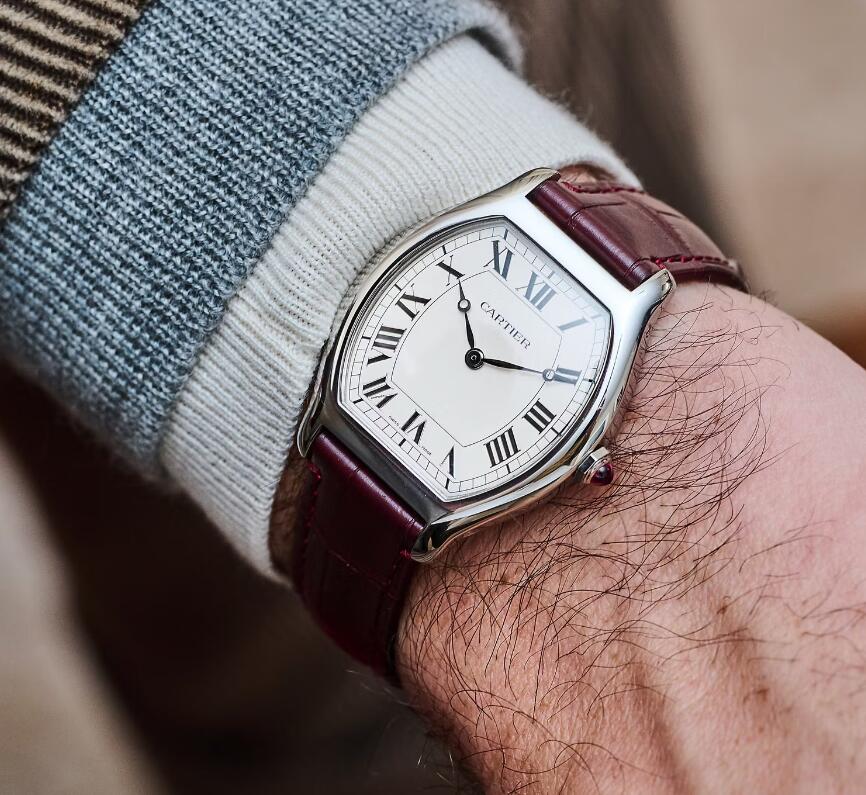Since 2017, Cartier has dutifully reissued one of its classic shapes as part of its perfect replica Cartier Privé collection watches. This year, one of the oldest takes its turn: the Tortue. Originally introduced in 1912 but also well-known for its neo-vintage era monopusher chronograph, the 2024 Tortue collection plays on both of these eras, featuring both two-handers and chronographs that should leave Cartier enthusiasts satisfied.
Cartier introduced the Tortue in 1912 (French for “turtle”), making it older than pretty much every Cartier shape except the Santos-Dumont (1904). By the 1920s, Cartier was adding complications like monopushers and minute repeaters to the shape, some of the first examples of Cartier blending its singular style with mechanical innovation. The Tortue Monopusher, Cartier’s first chronograph, was a dainty proposition featuring calibers from European Watch & Clock Co., a joint venture between Cartier and Edmund Jaeger (Jaeger-LeCoultre). These early chronograph fake watches for sale are extremely rare: less than 15 or so have ever surfaced.
For 2024, Cartier’s brought this history back in a collection of limited editions: each of the chronographs and two-handers is limited to 200 numbered pieces in each metal – platinum or yellow gold. There’s also a diamond-set platinum version limited to 50 pieces that we didn’t get to see except through a display case.
The return of the UK luxury replica Cartier Tortue monopusher (monopoussoir, in French) chronograph watches is most exciting. The yellow gold or platinum case measures 43.7mm x 34.8mm and 10.2mm thick, about the same size as the CPCP Monopusher. That said, the case looks to have been slightly reworked and I think it looks better. I think it’s because the shape pinches more at the lugs, giving the polished case just a bit more shape.
Both dials have a Roman numeral track broken up by large subdials. The numerals on the platinum version are raised and rhodium-plated, while on the yellow gold, they’re black and printed. Both have blued Breguet-style hands.
The dial design of both is well executed. Swiss AAA Cartier copy watches has certainly looked more towards those extremely rare 1920s Tortue monopushers for inspiration than the later CPCP. The design feels cleaner and more balanced compared to those neo-vintage CPCP chronographs. Both case metals have blued Breguet-style hands that contrast nicely against the opaline dial. To me, the yellow gold dial is more successful, with the Roman numerals offering a contrast that the monochromatic platinum execution doesn’t have. Cartier made similar monochromatic choices with last year’s Tank Normale. Oddly, it’s the second year in a row I’ve preferred the yellow gold Privé offering to the platinum.
The monopusher’s sapphire caseback reveals the manufacture caliber 1928MC, a new movement that’s a column wheel chronograph with Côtes de Genève decoration on the bridges. It beats at 4 Hz and has a 44-hour power reserve. The hand-wound movement is noticeably reworked compared to the 1998 caliber that was built by THA, the Èbauche, the joint venture of watchmakers Vianney Halter, Danis Flageolett (De Bethune), and F.P. Journe.
Most notably, the caliber is now shaped to match the curves of the Tortue shape. It also features some of the finishing you’d expect for a $50,000-plus chronograph, including curved Geneva stripes and beveled bridges.
The platinum monopusher costs €53,000, while the yellow gold is €46,000. It’s a well-executed, faithful update of the high quality Cartier Tortue replica watches. And while there’s certainly competition and you could find more innovative chronographs around, few blend aesthetics and technical as well as Cartier.
Time-Only Tortue
Meanwhile, Cartier also released platinum and yellow gold time-only models to fill out the Tortue collection. Both top super clone watches measure 41.4mm x 32.9mm, noticeably larger than, say, last year’s Tank Normale. I might prefer a touch smaller, but I have to admit they looked just fine on a few different wrist sizes (including mine) during our Cartier meeting.
Like the monopushers, both feature an off-white opaline dial. Again, I prefer the black numerals on the yellow gold version, though as these pictures illustrate, at certain angles the raised numerals do provide additional contrast.
Unlike the CPCP two-hander Tortues, these are flat dials and don’t feature any guilloché, which, in addition to displaying a continued commitment to a traditional technique (see Rolex 1908), would’ve also helped to fill out the large dial. That said, the dial is cleaned up compared to the CPCP’s, more reminiscent of a 1970s Tortue, where the railroad track is pushed to the outside of the dial.
On both, I wish Cartier would’ve kept blued Breguet-style hands instead of matching them to the case color, though I’m glad they kept the hand style and didn’t swap for simpler epée hands. Both are delivered on an alligator strap with platinum or gold buckle. Inside is Cartier’s commonly-used caliber 430 MC, based on a manual wind Piaget caliber that beats at 3 Hz with 38-hour power reserve.
Both time-only Tortues are successful dress replica watches wholesale that add to the growing lineage of Cartier’s modern Privé lineup. The platinum has a price of €31,100, while the yellow gold is €27,900.
Overall, this year’s Tortue collection is a successful update of one of Cartier’s oldest shapes. It pulls elements from every era of the Tortue: 1920s, ’70s, and ’90s, to arrive at something that’s modern but rooted in history. While we’ve come to expect a Privé release like this every year since 2017, the return of a monopusher chronograph is the perfect example of how Cartier continues to surprise and delight its collectors.





